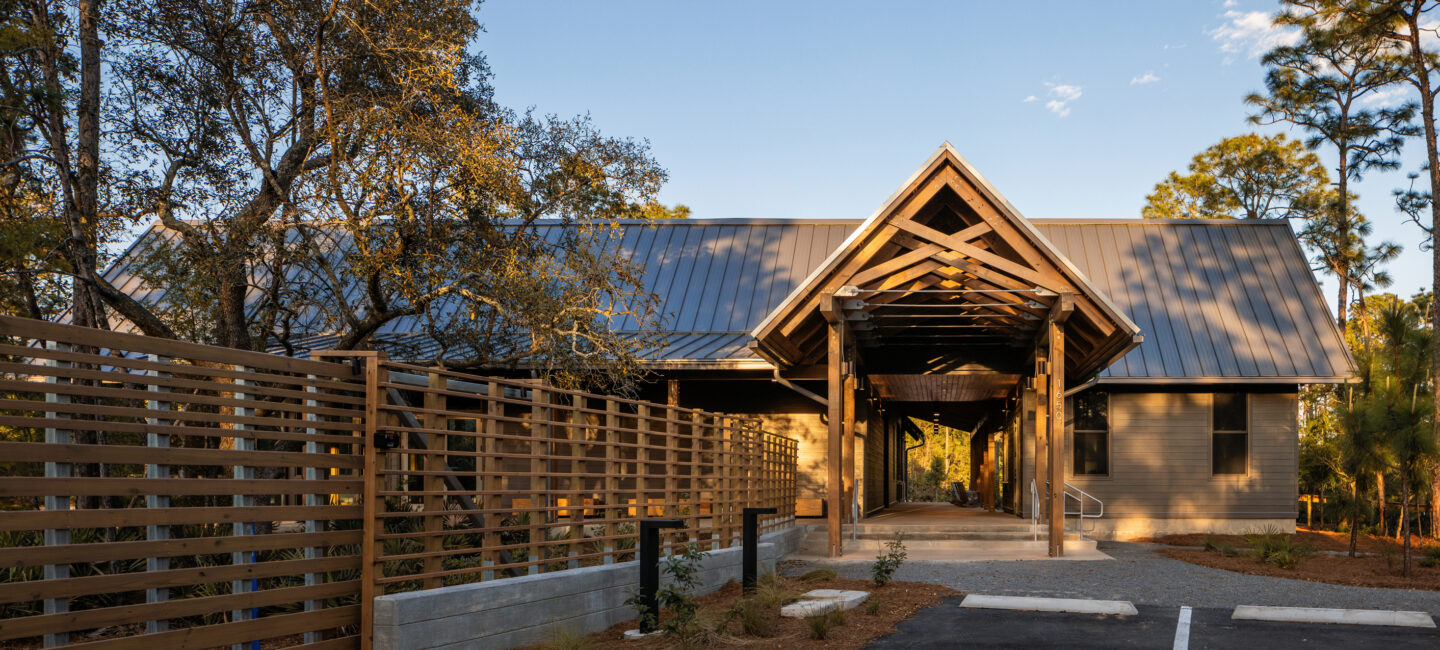A new hub for experiential environmental education and sustainable tourism, the Ecocenter is designed in partnership with WATERSHED, the City of Gulf Shores, and the Gulf Coast Center for Ecotourism and Sustainability. The environmental education campus was designed to support nature-based programming, sustainable tourism, and hands-on learning for students and the broader Gulf Coast community. The 12 acre campus features over 17,000 SF of education spaces including open-air classrooms, teaching gardens, an adventure challenge course, and maker spaces – all designed to foster connection with the land and one another. Located adjacent to 57 acres of preserved wetland and Gulf State Park, the campus serves as a physical and programmatic bridge between the community and visitors with its surrounding ecological context.
The project was fully funded through the RESTORE Council as part of broader efforts to support ecological and economic recovery in coastal communities. A collaborative, stakeholder-driven design process prioritized ecological sensitivity, educational impact, and long-term resilience. 60% of the upland site and 100% of the wetlands remains undisturbed, with buildings carefully inserted into previously cleared areas to preserve the existing longleaf pine and oak habitat.
The campus includes eight low-impact structures: open-air pavilions and activity hubs that support targeted programming. For example, the Mobility Hub provides access to a fleet of bicycles for guided excursions into the state park trail system, while the Making Hub includes a dedicated maker space for creative and environmental learning. The Gathering Hub offers a grand, screened-in porch that anchors the campus and serves as a landmark.
The architecture employs passive ventilation, daylighting, and other biophilic strategies to strengthen connections between occupants and the landscape. Designed to achieve LEED Gold and FORTIFIED Commercial Silver certifications, the project emphasizes material restraint, clarity of structure, and seamless integration with its environment. The result is a purpose-built campus that fosters stewardship, sustainability, and immersive outdoor education.










